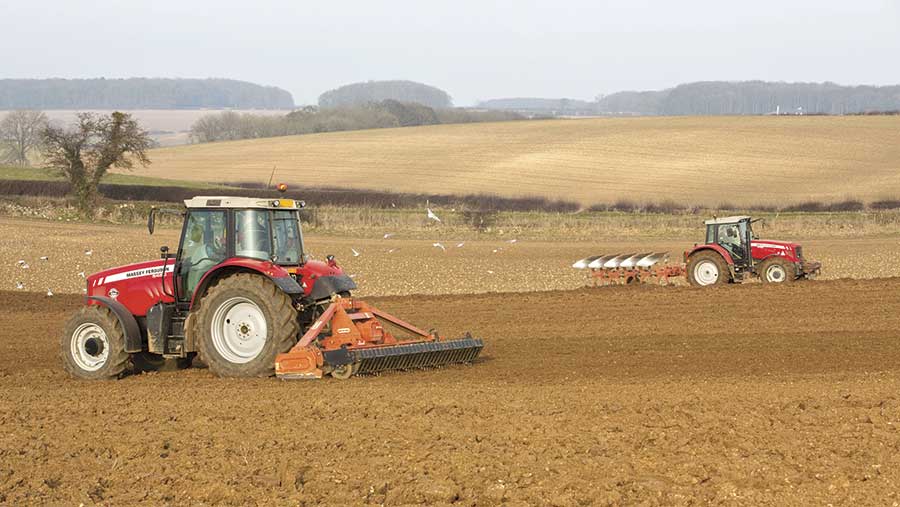Farm borrowing up for working capital and restructuring
 © Tim Scrivener
© Tim Scrivener Farm borrowing rose by £481m in 2017 despite higher value BPS payments and better milk prices.
The 2.7% rise took the total to £18.292bn by the end of December.
“The figures in general show that overall farm profitability has not improved, although some individual sectors such as dairying have,” said Tom French, a director of land agent and consultant BTF Partnership.
See also: Take part in our farm borrowing poll
Much of the increase in borrowing was for additional working capital although some businesses were investing in longer-term expenditure such as land and buildings, particularly buildings which could be let for either residential or commercial use, he said.
While agriculture is still a sector favoured above many others by the banks, a good business track record is needed and many long-term loans now have review clauses, usually every five years, when the bank can withdraw the facility if it wishes.
“The dairy sector saw an improvement in trading performance in the second half of 2017, following peak borrowing earlier in the year,” said Ainsley Baker of Kite Consulting.
“Most dairy businesses were repaying debts and creditors in the second half of 2017 so it’s unlikely dairy operations contributed to the increase in debt in December 2017.
“In the coming year we anticipate cashflow pressure in the second half of 2018 due to weaker forward dairy markets.”
Borrowing tips
- Get the borrowing limit set up in good time – requires up-to-date financial information.
- If past performance has not been good, produce budgets to show the business is improving.
- Make sure that the facility agreed is adequate so that you can work within your borrowing limits.
- Lenders are increasingly adding covenants (conditions relating to financial performance of the business) to borrowing facilities, and periodic reviews during the term of a loan including re-valuations of security.
- Questions to ask – what value of security is required, what is the rate of interest and the margin over base rate, is there a minimum rate and are there any early repayment conditions, what are the setting up and annual fees – get clear written information on this.
Tom French, BTF Partnership
- Banks support well-organised, profitable businesses with a strong grasp of figures and a vision – be one step ahead – have up-to-date monitored budgets and cashflows.
- Beware of high cost offers from second-tier lenders.
Ainsley Baker, Kite Consulting
According to the NFU’s recently released banking survey results, the overall average proportion of existing finance used for working capital cashflow purposes is 34%. Between sectors, this ranges from 27% in horticulture to 38% in the dairy sector.
The average proportion of borrowing used for investment purposes is 66%.
The survey also shows 62% of farmers felt that their bank would be supportive of future borrowing this year. This is the lowest level recorded in the NFU’s annual survey and compares with 66% in 2016 and 76% in 2015.
However 19% felt their bank would be unsupportive, the highest level recorded and up from 16% in 2016 and 13% in 2015.
“Over the past eight years, the number of farmers saying that banks have been generally supportive stayed between 65%-75%,” said NFU economist Anand Dossa.
“This has declined over the last year, largely as banks are having to comply with more regulations and are a lot more stringent due to changes following the crash of 2007.”
